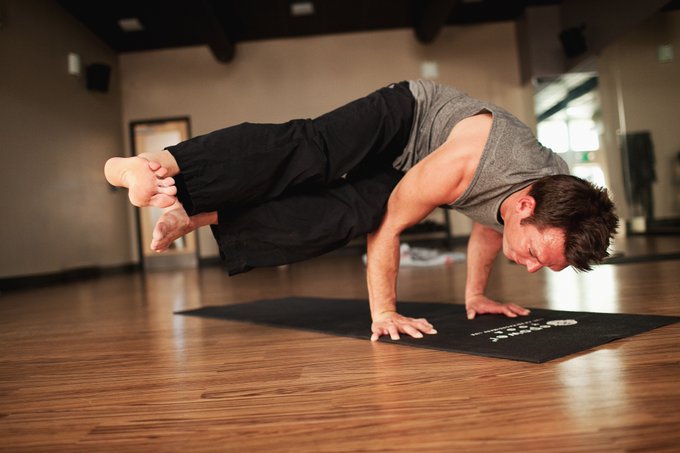
In the era of hip-hop yoga and handstands on Instagram, it’s easy to associate yoga with impossibly lithe and limber young people. Those with chronic back pain, arthritis or a bum hip might not feel so welcome in a power vinyasa class.
But Samamkaya Yoga in the Flatiron district caters to practitioners with aches and pains.
Hourlong classes are slow and methodical, focusing on therapeutic movements that strengthen alignment. Students usually complete just four or five poses, achieved with the help of slings, belts, blocks and other props.
Barry Koski, 67, a retired educator with a pronounced thoracic spinal curve, said his “back and spine feel as healthy as they have ever felt.” He credits his well-being to Deborah Wolk, 56, a wiry co-founder of the studio, which is run cooperatively by all of the teachers.
Ms. Wolk is obsessed with precision in movement.
She had the walls of the studio painted in a grid — broad stripes of salmon, gray, yellow, blue and hot pink — and there are vertical and horizontal axes on each yoga mat to help focus students on their body alignment. Chairs, blocks and bolsters are stuffed into shelves and corners, but during each class, the studio becomes littered with them, as they are used to support a modified downward-facing dog or child’s pose. Sydney, an articulated plastic skeleton, is often hauled out of his corner for anatomy demonstrations.
“It is hard for students with scoliosis or long-term injuries to know where they are in space,” Ms. Wolk said. “Lining oneself up with yoga props helps guide students closer to their center, into balance, and they experience less pain.”
Karla Silverman, 49, said it was this emphasis on careful positioning that made her feel safe. A former dancer, she has considerable back and neck pain and has found that a lot of exercise “can overstretch your already overstretched places, while keeping the weaker areas tighter.”
On a recent Saturday, Ms. Silverman and Mr. Koski hung upside down from rope slings, letting their spines draw down toward the floor, opening the spaces between their vertebrae. At various other points in the class, students lay peaceably on the floor with their legs against the wall, or stretched their hamstrings by leaning over chairs piled with blankets and bolsters. After explaining and demonstrating each pose, Ms. Wolk would flit among individuals, coaxing students into deeper stretches or pointing out a shoulder that looked too scrunched.
The personal attention is a major plus for Helen Pearlstein, 70, a native of Brooklyn who has severe scoliosis. She said she appreciated her teachers’ knowledge of her back pain.
“I feel very comfortable trying new poses because I know the teachers would never let me hurt myself,” she said. “And my doctors are amazed by the movement I have.”
[“source-ndtv”]

